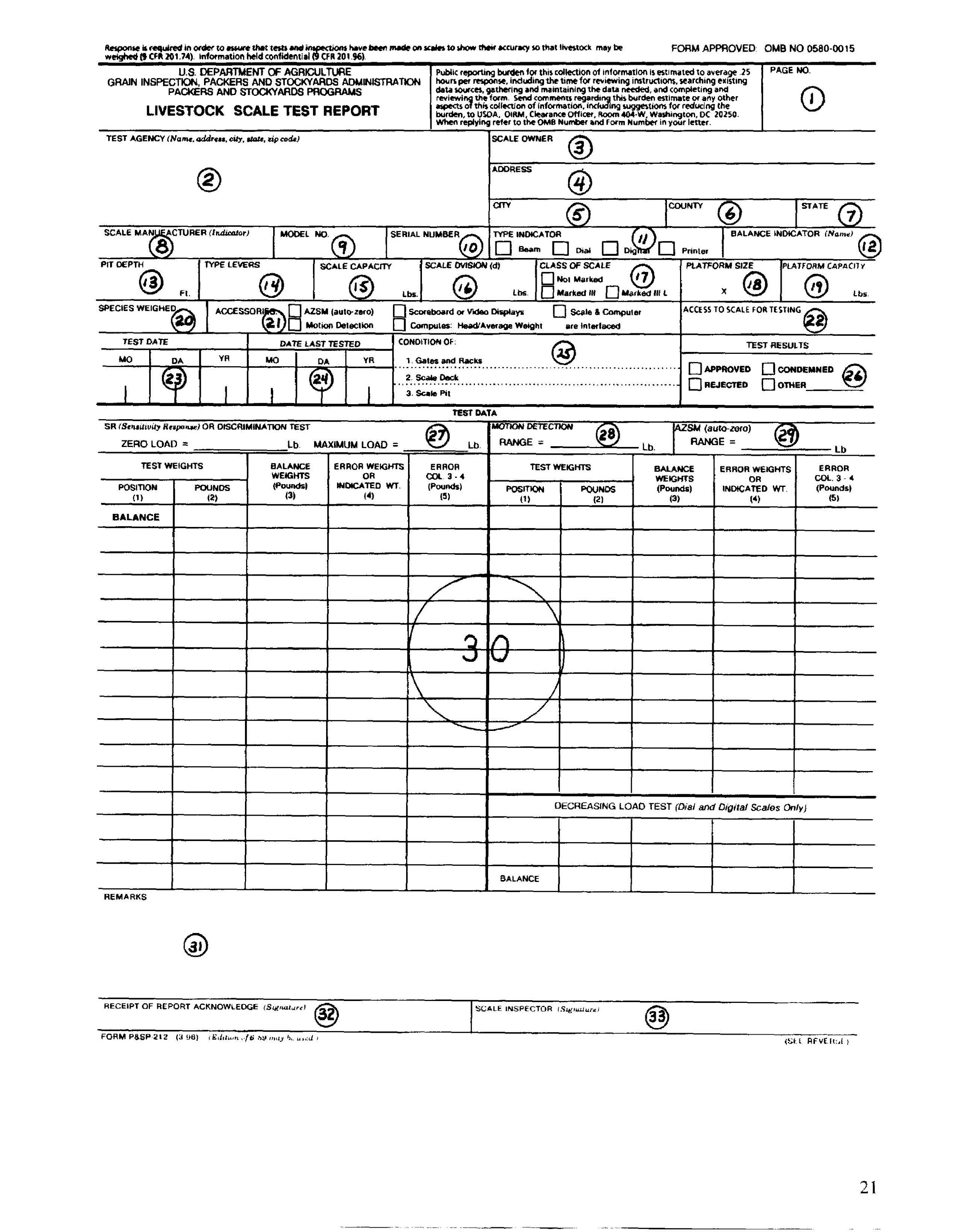3 Main Types of Scale Reports
All Legal for Trade weighing applications must meet the standards of their governing body to buy and sell product by weight. The various governing bodies require documentation of scale calibrations to ensure the scales are within acceptable tolerance. In this article, we will identify and discuss three of the most important scale calibration documents required by state Department of Agriculture and Consumer Services, Division of Weights and Measures, and Packers and Stockyards. The following reports must be completed by a licensed scale technician and submitted when appropriate to the governing agency. All parties are required to keep a copy of the reports.
1) Certificate of Calibration
The most common documentation of scale calibration is seen on the Certificate of Calibration. This report gives various types of information that are used to identify the scale. On American Scale’s Certificate of Calibration, there is a top block for filling in information that will identify the scale make, model, and serial number. There are also identifiers for scale identification, location, and environment. As you move down the report you will have a section to identify the test weights that were used in the calibration. Test weights must be checked every year by a Standards Lab. The report lists the set identification number, date last calibrated, and the N.I.S.T. number. Finally, the report shows detailed information to be entered by the technician based on his findings. A corner test is performed ensuring accurate weighments throughout the scale. An overall build-up test is performed to find linearity, tolerance, and potential calibration errors. A Certificate of Calibration is a great document to keep on file to track calibrations and reference during audits.
2) Truck Scale Report
The truck scale report is a large document that can be used to easily track a scale’s performance. A truck scale report will give pertinent information for identifying the scale and the type of device being used to for weight read-out. This report is an especially useful tool in determining corrective actions for a truck scale. A section on the report is dedicated to the various key parts of a truck scale to include approaches, platform, rock guard, platform clearance, foundation, suspension and grease, checking, and load cell condition and size. All this information is needed to help the service company better understand why recurring issues may be happening. The final sections of the report show the findings of the scale when under a load. A certified weight amount is placed on the scale in increasing increments. These increments are recorded to show build-up errors. Next, the report will show weighments over each load cell and section of the scale. These findings are recorded before adjustments are made. As the scale is adjusted and calibrated to standard, the report will reflect the weighing condition which the technicians left the truck scale. Using a Truck Scale Report is a great indicator of possible issues occurring with the scale as it will reflect areas of the scale that have continual errors and what has been done to correct these errors.
3) Livestock Reports
Monorail Scale Report
One type of livestock report is the monorail report. A monorail is a single, overhead rail used in most processing plants to push carcasses or products through the production rooms. Monorails that weigh carcasses which will be bought or sold by weight are required to be checked, calibrated, and documented for by the Packers & Stockyards Division of the Federal Trade Commission. Monorail reports are very tedious reports, but they provide a great deal of information that can protect a buyer or seller should a weighment ever be questioned.
Livestock Scale Report
The most common livestock report is the livestock scale report. The livestock scale report is like a monorail report. The report must be filled out by a licensed technician and submitted to Packers & Stockyards. A livestock scale is any scale used to weigh live animals. Livestock reports are required by the Packers & Stockyards Division. Livestock scales can be for multi-animals or single animals. It is important to remember that not all livestock weighing applications are legal for trade. Consult with a technician before purchasing a livestock scale as it may not meet NTEP standards, and a legal Livestock Scale Report cannot be filled out for that scale.
Closing Words
At American Scale we strive to bring you informed and useful content on all things scale related. Be sure to check out our legal for trade truck scale system articles about truck scale foundation or how much do truck scales cost. We even have a guide to warranties. We also have articles on scale accessories, common problems to prolong your scales lifespan, weighing applications as well as what scale indicator works best with your junction box. To learn more about bench scales, it would be good to check out our other articles such as “Bench Scale Basics'' and “How Much Does A Bench Scale Cost?”. These articles will help with the basics of bench scale ownership.



